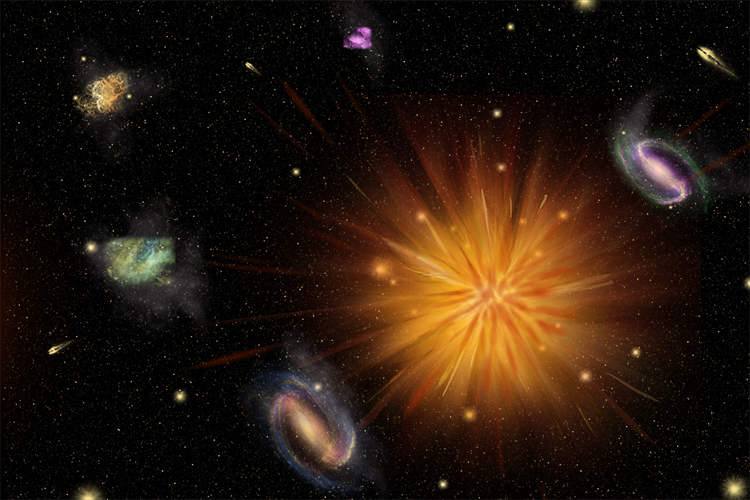Multiverse – Many worlds; the Hindu idea of lots of worlds and universes, with many different inhabitants
To remember the meaning of the Hindu term Multiverse, use the following mnemonic:
Her poem ran into multiple verses (multiverse) and expressed her idea that there were many worlds and universes containing lots of strange creatures.

There is a belief among Hindus that there are fourteen lokas (planes or realms of existence) that together make a multiverse.
The fourteen lokas are divided into seven upper worlds, known as vyarthis, and seven lower words, called patalas.
The vyarthis are:
- Satya-loka, the place of Brahma, where each person’s atman (inner self, or soul) is released from the inevitability of rebirth
- Tapa-loka, the plane of conscious energy and spirituality
- Jana-loka, where the sons of the god Brahma live
- Mahar-loka, where enlightened beings such as Markandeya, a Hindu sage (wise philosopher), live
- Svar-loka, an area between the sun and the Polar Star, regarded as the heaven of the god Indra, a paradise where all the millions of Hindu gods live
- Bhuvar-loka (or Pitri-loka), the space between Earth and the sun where semi-divine beings live
- Bhur-loka, Earth itself which, Hindus believe, is one of billions of inhabited worlds in the universe
The patalas are:
- Atala-loka, ruled by Bala, who is a son of Maya (Maya possesses mystical powers)
- Vitala-loka, which is ruled by the god Hara-Bhava, who is a form, or avatar, of Shiva.
- Sutala-loka, the kingdom of the demon king Bali.
- Talatala-loka, the realm of Maya where Shiva, under Maya's protection, also resides
- Mahatala, where many serpents live
- Rasatala-loka, believed to be the home of two demons, Danavas and Daityas
- Patala-loka, the lowest of the realms, ruled the King of serpents, Vasuki





